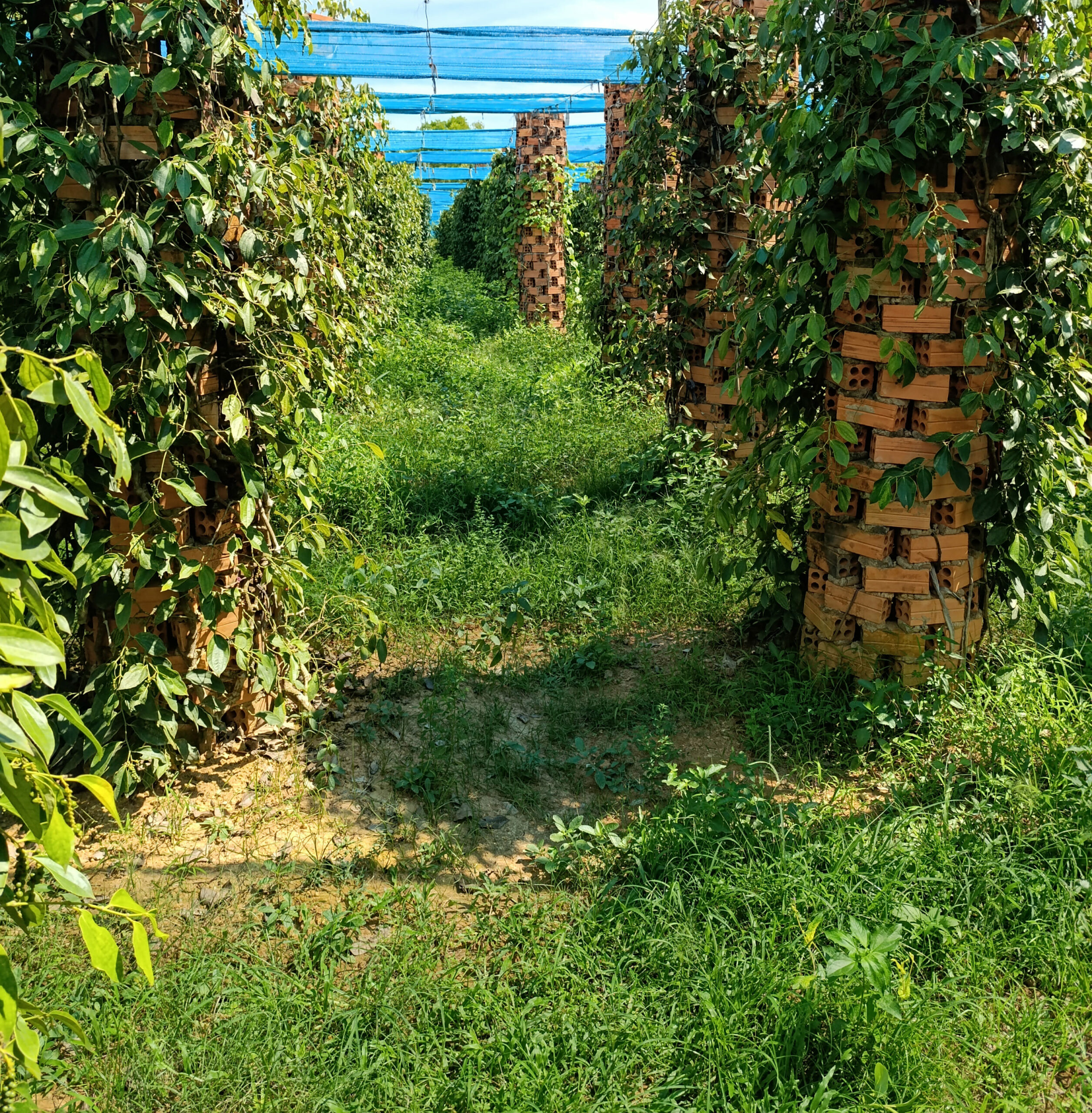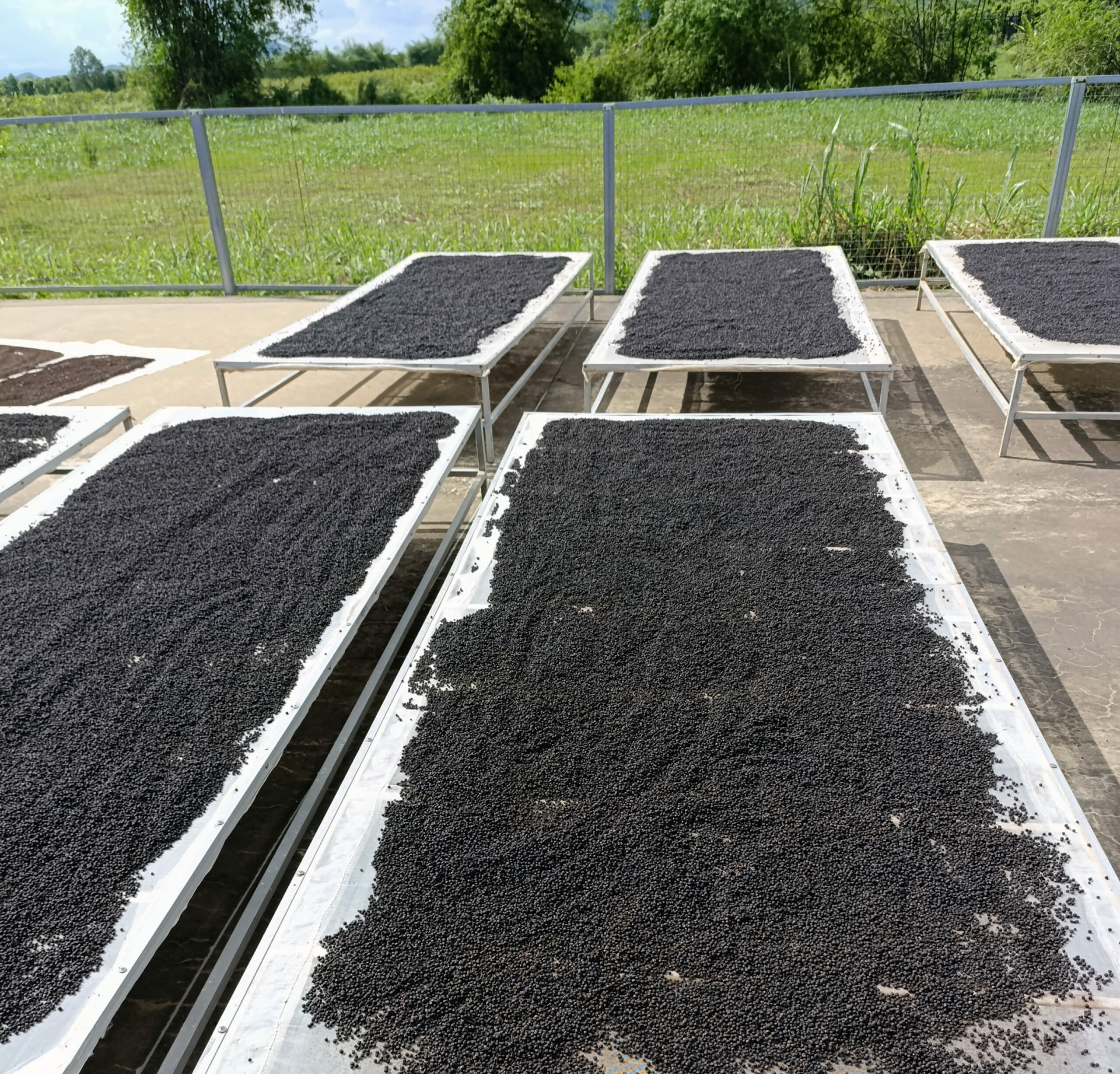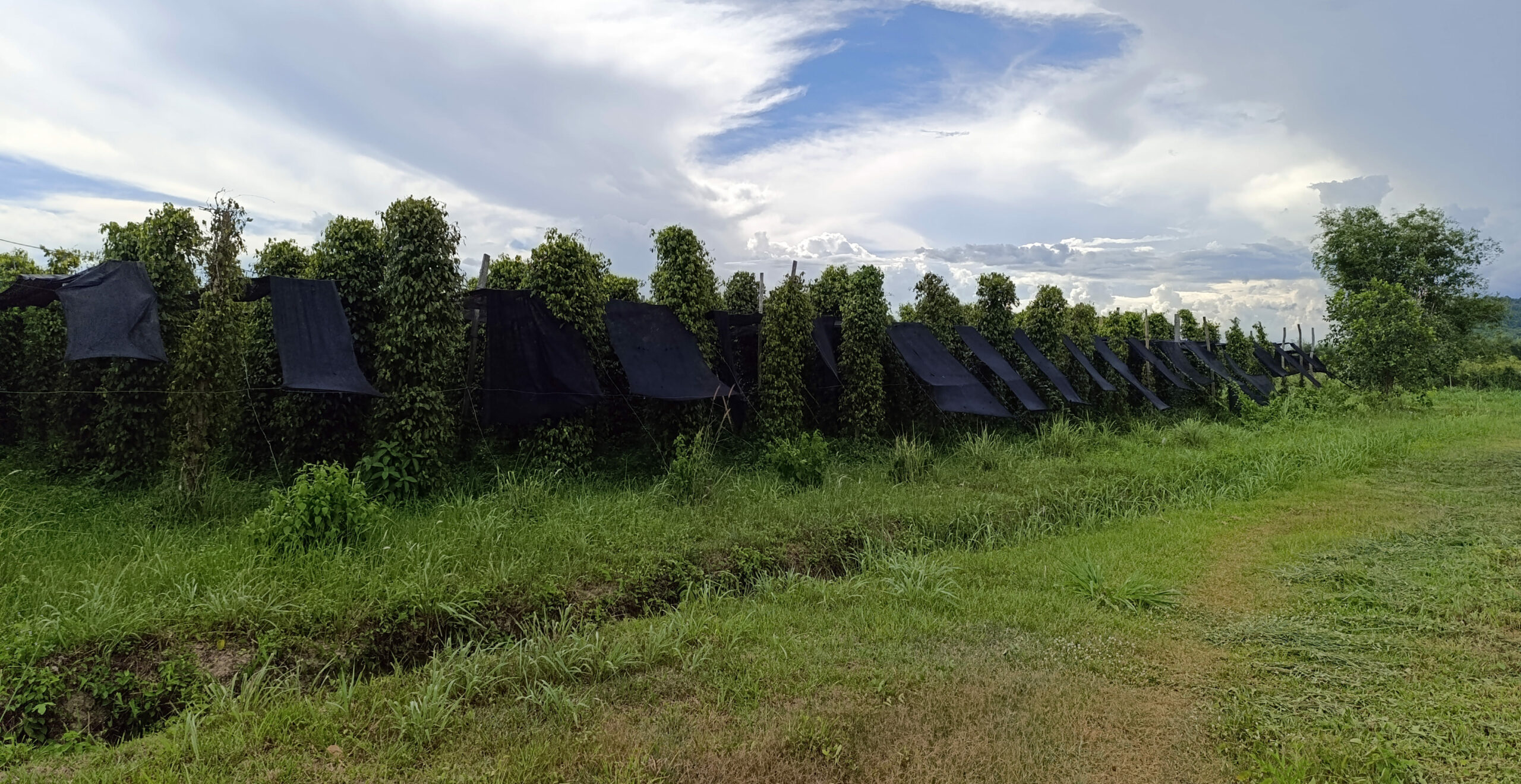Kampot pepper from Cambodia

Kampot pepper cultivation has a long history and was first described in the 13th century, during the Angkorian era, when the Chinese diplomat Zhou Daguan visited the area. Modern intensive production was initiated under the French colonial rule in the 1870s and at the beginning of the 20th century, Cambodia harvested around 8,000 tons of Kampot pepper annually. In the 1960s, there were still 1 million pepper poles in Kampot, producing around 3,000 tons per year, but the production was severely affected by the Cambodian civil war and only 4 tons per year were harvested by the end of the 1990s.
Kampot Pepper, a gourmet pepper sought after by chefs around the world, comes from the region of Kampot on the south coast of the Kingdom of Cambodia. Nestled between the mountains and the ocean, the region boasts a pepper growing history that dates back 400 years, a unique soil, and a rainy, humid climate perfectly suited for producing outstanding pepper.

From the moment you try Kampot Pepper, you’ll understand why it’s considered far superior to the peppers produced in Vietnam and India. Produced from two varieties of plants, it is extremely versatile in its flavour, ranging from mildly sweet to intensely spicy, with an unmistakable aroma that’s sure to arouse and delight the senses.
Pepper requires constant watering and fertilising during the long dry months from November until May and, with a changing climate, often during the traditionally wet months of June to October too. The watering is all done by hand, enabling the workers to individually assess the health of the “tree” as they progress through the planation. Organic fertilisers are added as needed via a hole in the soil close to the root system. Periodically, fresh topsoil is also added around the plants.
The end of the protectorate and, above all, the Red Khmer civil war led to the virtual disappearance of Kampot pepper plantations in the second half of the 20th century. It was only in the 2000s that a number of family farms revived pepper cultivation, which has since been redeveloped through cuttings. Current annual production of genuine Kampot pepper, which meets the strict PGI (Protected Geographical Indication) criteria, is around 100 tonnes.

